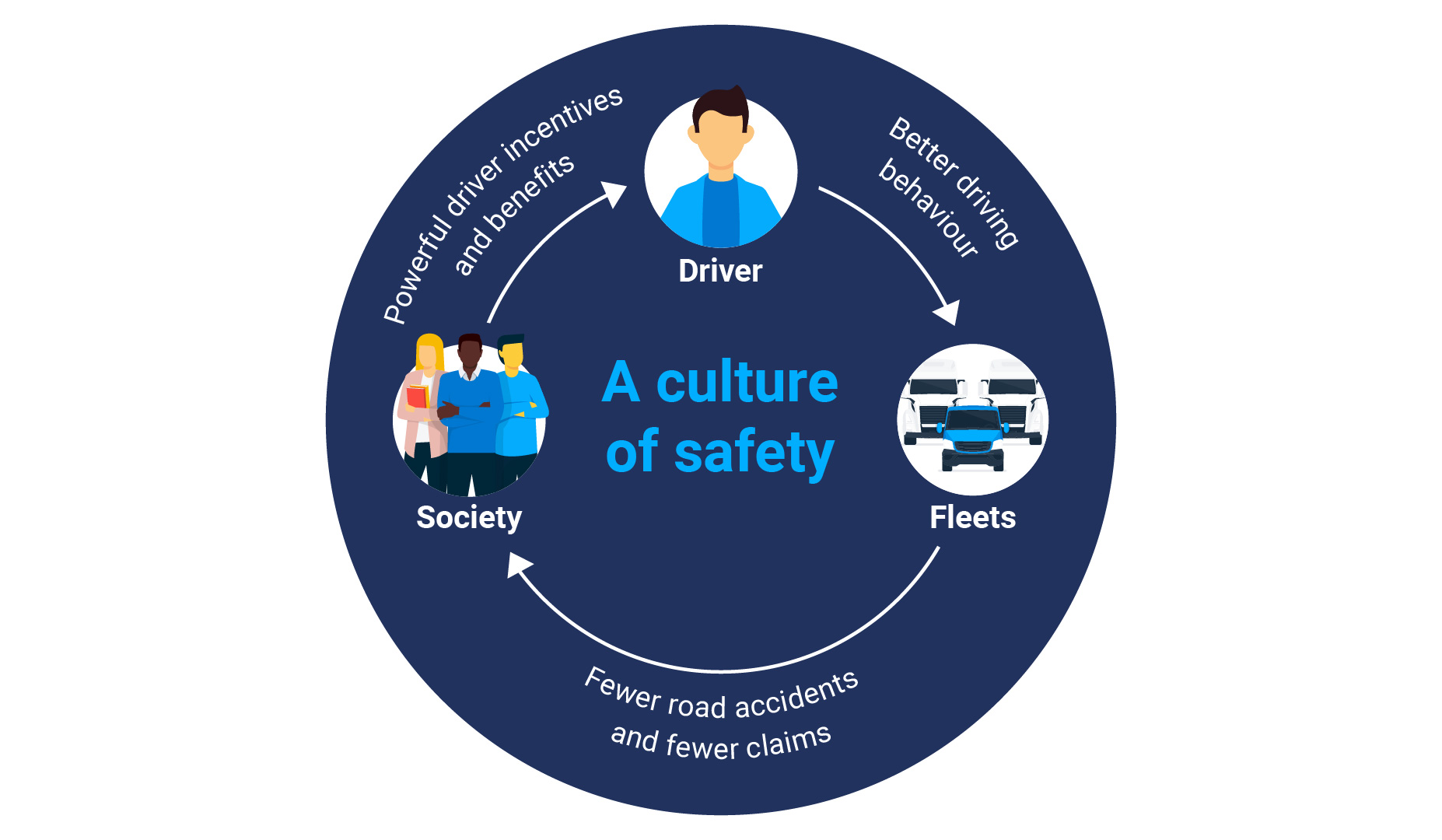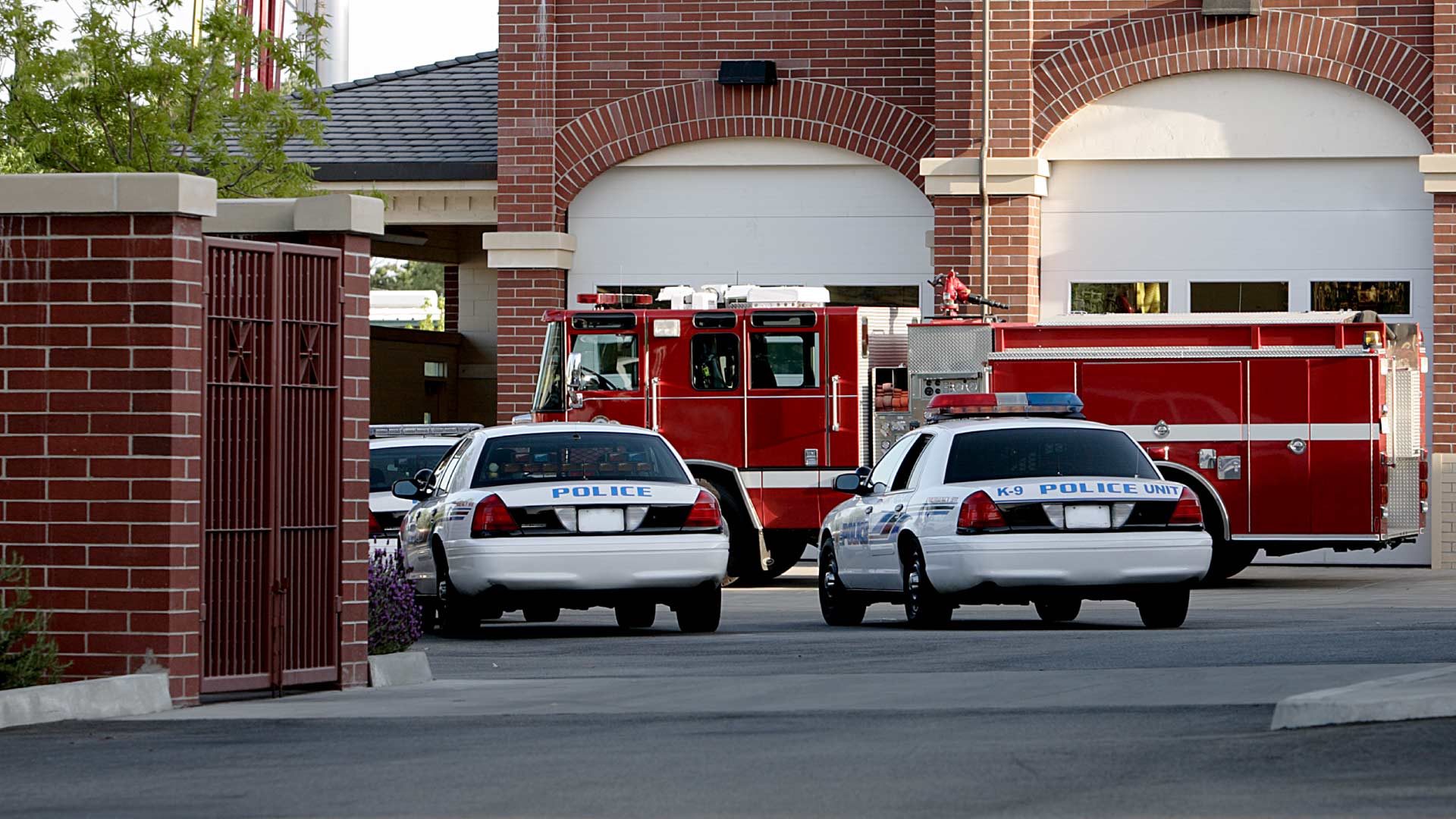How a well-built fleet safety culture prevents legal trouble
A fleet safety program protects drivers, prevents collisions and keeps businesses legally secure. See how well-built policies, AI and training reduce risk.


Key Insights
- A structured fleet safety program keeps companies out of legal trouble by enforcing policies, monitoring drivers and addressing risks early.
- AI dash cams, training and performance tracking prevent accidents, lower costs and strengthen compliance.
- Recognizing safe drivers improves engagement, reduces turnover and provides proof of a proactive safety culture.
Some fleet owners don’t realize they have a problem until it’s too late. A driver makes a split-second mistake. A traffic camera catches it. A lawsuit lands on your desk. Suddenly, you’re fighting to protect your business, your reputation and your bottom line.
Legal trouble doesn’t just show up out of nowhere. It creeps in through weak policies, outdated training and a lack of oversight. A single gap in your safety culture can cost millions. But the fleets that get ahead of risk, the ones with clear policies, AI-based monitoring and driver accountability, are the ones avoiding lawsuits and running better, more profitable businesses.
A bulletproof fleet safety culture is your best defense. Here’s how to do it.
Establishing a shared, written safety policy
Verbal instructions don’t hold up in court. Handshake agreements don’t protect your fleet. When safety expectations are not spelled out, they’re open to interpretation, and that’s a liability no fleet can afford. A written safety policy eliminates the gray areas, keeping your drivers, managers and legal team on the same page.
Why written policies are Important
When a collision happens, investigators don’t care about good intentions. They want concise documentation. If regulations change or incidents occur, a well-structured policy shows your business is proactive, not negligent. It outlines expectations, reinforces compliance and protects against claims that your fleet operates without oversight.
For drivers, it removes uncertainty. They know what’s expected. For fleet managers, it sets a standard. No assumptions. No “I didn’t know.” Just clear rules that everyone follows.
What to include in a safety policy
A good policy lays out the rules that keep your fleet compliant and protected. Key elements include:
- Vehicle operation guidelines – Speed limits, distracted driving rules and required rest breaks.
- Incident reporting – Step-by-step protocols for accidents, near-misses and equipment failures.
- Substance use policies – Clear-cut drug and alcohol regulations with zero ambiguity.
- Inspection and maintenance procedures – Defined schedules and responsibilities to prevent mechanical failures.
Benefits of a written safety policy
A well-written, well-thoughtout safety policy is proof. When disputes arise, a safety policy can mean the difference between a quick resolution and a costly legal battle. Documented safety protocols help to establish:
- legal defense – Shows regulators and courts that your fleet follows due diligence.
- Standardized safety practices – Keeps every driver operating under the same expectations.
- Better enforcement – Policies with signatures attached aren’t suggestions; they’re obligations.
Get started with our Fleet Safety Checklist.
Using AI dash cams for improved safety
When an incident happens, stories change. Details get fuzzy. Blame shifts. Without clear evidence, your fleet can get caught up in a legal battle. AI-based dash cams change that. They see everything, recording incidents, identifying risks and providing undeniable proof when needed.
Role of AI in fleet safety
These cameras record and analyze. AI dash cams track driver behavior in real time, picking up on risks before they turn into major incidents. A driver looks away from the road for too long? The system flags distraction. A truck follows too closely? Instant alert. Harsh braking, sharp turns, sudden lane departures…the AI notices what human eyes might miss.
To be clear, AI dash cams are more about prevention than surveillance. When drivers know they’re being monitored for safety, they stay more focused, react faster and develop better habits over time.

A single clip can mean the difference between a dismissed claim and a financial disaster.
Operational benefits
AI dash cams turn safety from a guessing game into a measurable process. They catch the habits that lead to accidents—sudden braking, tailgating, drifting—and give fleet managers a clear picture of where improvements are needed. Instead of waiting for an incident, companies can correct risky behavior before it costs them.
Insurance providers take notice when fleets have hard data to back up their safety records. Fewer claims mean better rates. When accidents happen, video speeds up the claims process, cutting down on disputes and delays.
Driver benchmarking and scoring systems
Some drivers are risks waiting to happen. Others are safety assets. The problem is knowing who’s who before an incident forces your hand. Without real data, you won’t know the difference until it’s too late. That’s where benchmarking comes in.
What is driver benchmarking?
Every driver on the road leaves a digital footprint. Speed spikes. Hard stops. Late arrivals. Benchmarking tracks these behaviors against standardized fleet safety metrics, but effective benchmarking goes further. It accounts for real-world variables like vehicle type, route conditions and regional driving patterns to keep scoring relevant and fair.
The most common metrics include:
- Speeding violations – Who’s pushing the limit and putting the company at risk?
- Harsh braking and acceleration – Signs of reckless habits that need intervention.
- Route adherence – Ensuring drivers follow the safest, most efficient paths.
Data removes the guesswork. If a driver poses a risk, their score will show it.
How scoring helps reduce legal risks
A fleet with a documented safety record is both safer and legally stronger. Driver scoring builds a case for your business in the event of legal trouble:
- Targets high-risk drivers for extra training before they cause problems.
- Proves a commitment to safety by showing proactive risk management.
- Provides solid evidence if a driver is falsely accused in an accident.
Technology Integration
Modern fleets don’t rely on gut feelings. Telematics and analytics software track driver performance in real time, flagging dangerous behavior before it turns into a liability. The right system not only collects data, it helps prevent accidents, lower insurance costs and keep your fleet legally protected.
Comprehensive training programs
A driver’s first training course gets them on the road. Ongoing training keeps them and others on the road safer. Roads change. Vehicles evolve. Regulations tighten. Without consistent education, even the best drivers fall behind.
Ongoing training for safety excellence
Regular driver training keeps skills sharp, corrects bad habits and ensures drivers stay up to date with new safety protocols. Fleet managers who prioritize ongoing education see fewer collisions, lower costs and better compliance records.
Technology is also changing the way drivers learn. AI-powered dash cams, telematics and automated safety alerts give fleets real-time data to address specific risks. Training programs that incorporate these tools give drivers practical experience with the systems designed to protect them.
Specialized training topics
Defensive driving courses help drivers recognize danger before it escalates. Crisis response training prepares them to react quickly in high-pressure situations, whether it’s a sudden road hazard or a serious incident.
Fleets that invest in hands-on, scenario-based training create drivers who can stay calm and think fast, to make decisions that save lives.
Legal benefits
When a collision happens, courts want to see proof that a company took every step to ensure driver competence. A well-documented training program shows commitment to safety, making it harder for negligence claims to stick.
Recognizing and rewarding safe behavior
Most drivers know the safety rules. The question is whether they follow them when no one’s watching. Fleets that recognize and reward good habits see fewer accidents, fewer violations, and stronger team morale. When safety is tied to real incentives, drivers stop seeing it as a checklist and start treating it like a core part of the job.
Recognizing and Rewarding Safe Behavior
Fleets that recognize and reward good habits see fewer incidents, fewer violations and stronger team morale. In fact, 71% of respondents of a recent study reported improved driver performance through driver rewards programs. When safety is tied to meaningful incentives, drivers stop seeing it as a checklist and start treating it like a core part of the job.
Creating a positive safety culture
Drivers respond to recognition. When safe behavior is rewarded, it becomes a habit. Some companies offer bonuses for accident-free miles. Others use monthly recognition programs or even small perks like gift cards or extra time off. Some fleets hand out bonuses. Others offer certificates, public recognition, or extra perks like preferred routes. A well-structured incentive program based on fair rewards and accurate data acknowledges drivers who reduce risk, improve efficiency or consistently meet goals, reinforcing a culture of safety.

Impact on driver engagement
A paycheck keeps a driver on the job. A good culture keeps them engaged. Drivers who feel valued for their safety record are more likely to stay with a company long-term. They also take fewer risks because they know their performance is being tracked in a way that benefits them, instead of just penalizing them.
Legal advantages
If an accident leads to legal trouble, a fleet with a documented safety recognition program has an extra layer of protection. It’s one thing to say safety is a priority; it’s another to show proof that drivers were actively incentivized to follow safety protocols. That kind of documentation helps push back against negligence claims and demonstrates a commitment to risk reduction.
Safety is the best insurance
A well-run fleet is built on preparation. Strong policies, dash cams, driver scoring and ongoing training all work together to create safer roads and lower legal risks. When safety is built into daily operations, incidents become rare, lawsuits hold less weight and drivers perform at their best.
Want to build a safer, legally protected fleet? Use this Fleet Safety Checklist to fine-tune your safety program.
Subscribe to get industry tips and insights
Table of Contents
Subscribe to get industry tips and insights
Related posts

Building a world-class driver training program: Essential strategies for truckload carriers
April 15, 2025
4 minute read

Embracing public safety technologies in the face of opposition
April 15, 2025
4 minute read

Unlocking Safer Roads: How Behavioral Science and Technology Are Improving Driver Safety
April 14, 2025
2 minute read

Beyond the road: Enhancing school bus interior safety with advanced technology
April 10, 2025
5 minute read

Enhancing student bus safety: Combating distracted driving in the digital age
April 7, 2025
6 minute read
